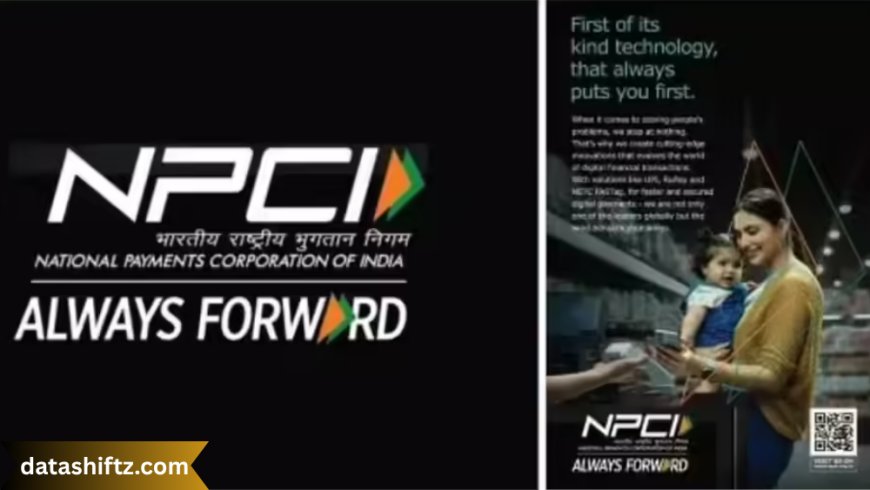NPCI: Powering India’s Digital Payment Revolution

Introduction
In the past decade, India has witnessed a revolutionary transformation in its payment infrastructure, thanks to the rapid adoption of digital technologies and strategic policy reforms. At the core of this transformation lies the National Payments Corporation of India (NPCI) — an umbrella organization driving the development and implementation of India's retail payment and settlement systems.
NPCI has played a pivotal role in creating a robust and inclusive digital ecosystem that enables seamless, real-time transactions across urban and rural India. From Unified Payments Interface (UPI) to Aadhaar Enabled Payment System (AePS), NPCI has pioneered platforms that empower citizens, businesses, and banks alike. This article offers an in-depth look at NPCI, its innovations, services, and its central role in shaping India's fintech revolution.
What is NPCI?
The National Payments Corporation of India (NPCI) is a not-for-profit organization established in 2008 under the guidance of the Reserve Bank of India (RBI) and the Indian Banks' Association (IBA). Its objective is to provide infrastructure for the entire banking system in India to facilitate retail payments efficiently and securely.
NPCI was created to consolidate and integrate various retail payment systems in the country, improve operational efficiency, and bring innovations in digital payments.
Vision and Mission of NPCI
Vision:
To touch every Indian with one or the other digital payment services provided by NPCI.
Mission:
To be the best-in-class payment infrastructure service provider, offering affordable, accessible, and real-time payment solutions in a secure manner.
Key Milestones of NPCI
| Year | Achievement |
|---|---|
| 2008 | NPCI incorporated |
| 2010 | Launch of Immediate Payment Service (IMPS) |
| 2012 | RuPay card introduced |
| 2016 | Unified Payments Interface (UPI) launched |
| 2018 | BHIM Aadhaar Pay launched |
| 2020 | UPI crosses 2 billion transactions per month |
| 2022 | UPI launched for feature phones (UPI123Pay) |
Major Payment Systems Operated by NPCI
1. Unified Payments Interface (UPI)
-
Real-time mobile payment system.
-
Inter-bank money transfer through smartphones using a UPI ID.
-
Over 12 billion transactions monthly (as of 2024).
-
Accepted globally in some countries like UAE, Singapore, France.
2. RuPay Card
-
Indigenous card scheme competing with Visa and MasterCard.
-
Lower transaction cost, wider reach in rural India.
-
Integrated with credit, debit, and prepaid categories.
3. Immediate Payment Service (IMPS)
-
Real-time fund transfer available 24x7.
-
Can be accessed via mobile, internet banking, ATMs.
4. Aadhaar Enabled Payment System (AePS)
-
Allows basic banking services using Aadhaar number and biometric authentication.
-
Popular in rural areas and among the unbanked population.
5. National Automated Clearing House (NACH)
-
Facilitates bulk payments like dividends, salaries, subsidies, and pensions.
-
Widely used for EMI collection and utility bill payments.
6. BHIM App (Bharat Interface for Money)
-
A mobile app based on UPI developed by NPCI.
-
Promotes simple and secure digital transactions.
NPCI's Contribution to Financial Inclusion
NPCI has played a critical role in democratizing access to banking and digital payments, particularly for the underserved and unbanked population. With platforms like AePS, RuPay, and UPI, NPCI has helped bridge the gap between rural and urban India.
List of Financial Inclusion Initiatives:
-
Jan Dhan Yojana Integration: RuPay debit cards issued to PMJDY account holders.
-
Aadhaar Integration: Enabled biometric authentication for transactions.
-
UPI123Pay: Designed for feature phones without internet.
-
Offline UPI: Supports transactions in low or no connectivity areas.
Benefits of NPCI Systems
| Benefit | Description |
|---|---|
| Interoperability | Seamless transfer across banks and platforms |
| 24x7 Availability | All systems like UPI, IMPS, AePS operate round the clock |
| Low Transaction Cost | RuPay and UPI reduce costs for banks and users |
| Secure Transactions | Multi-layered security with real-time fraud detection |
| Scalability | Handles billions of transactions with growing demand |
Challenges Faced by NPCI
Despite its widespread adoption, NPCI also faces a range of challenges:
List of Key Challenges:
-
Cybersecurity Threats – Growing fraud and phishing attacks.
-
Digital Literacy Gap – Particularly in remote or older populations.
-
Infrastructure Limitations – Poor connectivity in rural regions.
-
Scalability Pressure – Need to handle exponential growth in traffic.
-
Dependency Risk – UPI becoming critical to national payment ecosystem.
To tackle these, NPCI continuously updates its security protocols, expands support for regional languages, and invests in technological upgrades.
NPCI Subsidiaries and Strategic Partnerships
NPCI has expanded its influence by establishing key subsidiaries:
| Subsidiary | Function |
|---|---|
| NPCI Bharat BillPay Ltd (NBBL) | Centralized bill payment ecosystem |
| NPCI International Payments Ltd (NIPL) | Expansion of UPI and RuPay globally |
| National Electronic Toll Collection (NETC) | FASTag system for toll collection |
Additionally, NPCI collaborates with:
-
Banks (public and private)
-
Fintech startups
-
Global payment networks
-
Government agencies
Future of NPCI and Innovations Ahead
The future of NPCI looks highly promising with new initiatives and global expansion on the horizon.
Upcoming Plans and Innovations:
-
International UPI Expansion: Partnerships in Europe, Middle East, and Asia.
-
CBDC Integration: Collaborating on India’s Digital Rupee ecosystem.
-
Voice-based Transactions: AI-powered payment interfaces.
-
Blockchain Integration: Exploring use in secure transaction settlements.
-
AI and Fraud Detection: Real-time behavioral analysis for fraud prevention.
Global Recognition and Impact
NPCI's success has attracted international attention. UPI is now regarded as one of the most advanced payment infrastructures in the world. Countries like France, Singapore, UAE, and Bhutan have adopted or partnered with NPCI for cross-border payments.
UPI’s inclusion in the G20 agenda and collaborations with global fintechs like Google Pay, PhonePe, and WhatsApp Pay further emphasize its growing relevance.
Conclusion
The National Payments Corporation of India (NPCI) has redefined how Indians engage with money. It has not only modernized India’s payment landscape but also set a global benchmark for real-time, inclusive, and secure digital payments. From a basic mobile phone user in a rural village to a corporate executive in a metro city, NPCI has made digital payments accessible to all.
As India strides toward becoming a cash-light economy, NPCI will continue to innovate, expand globally, and fortify its systems against future challenges. The success story of NPCI is a testament to how technology, policy, and vision can transform a nation’s economy and empower its citizens.






























